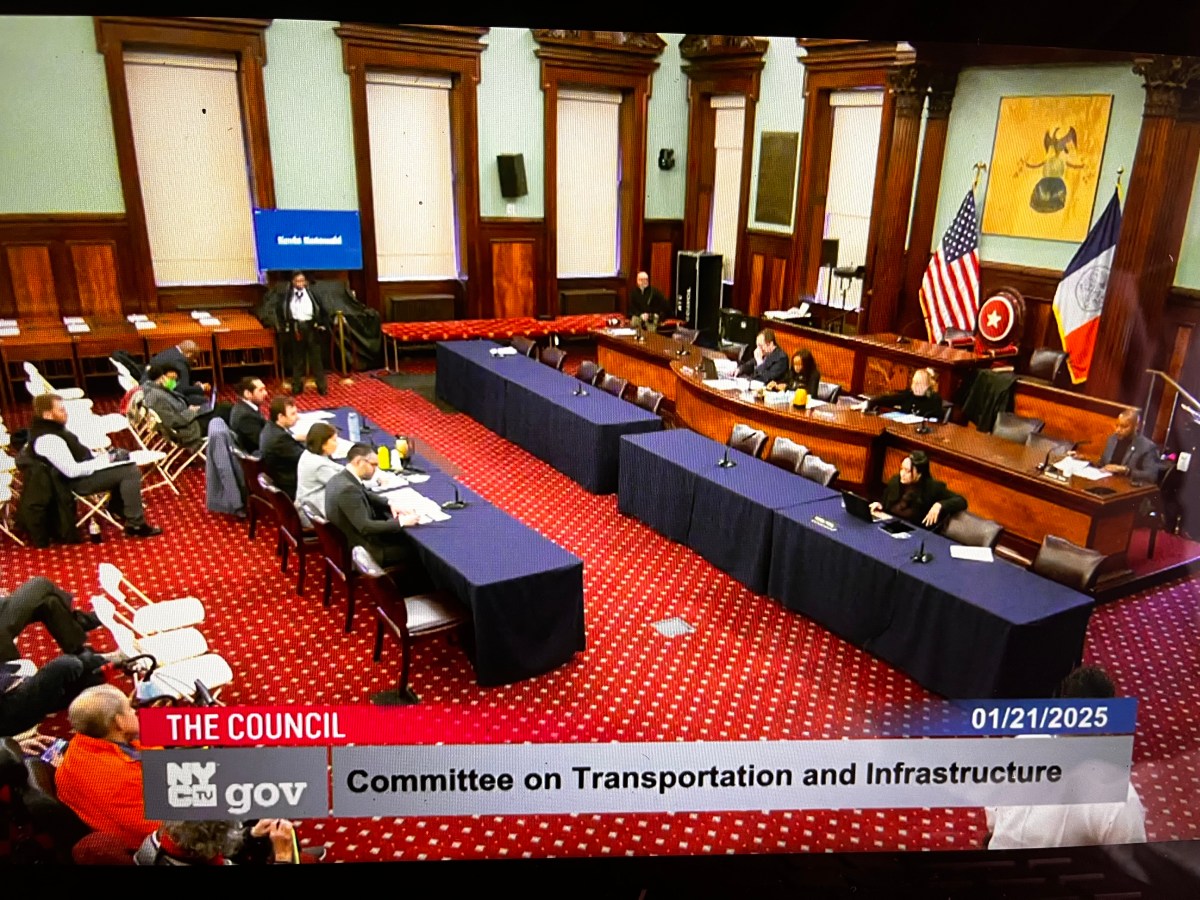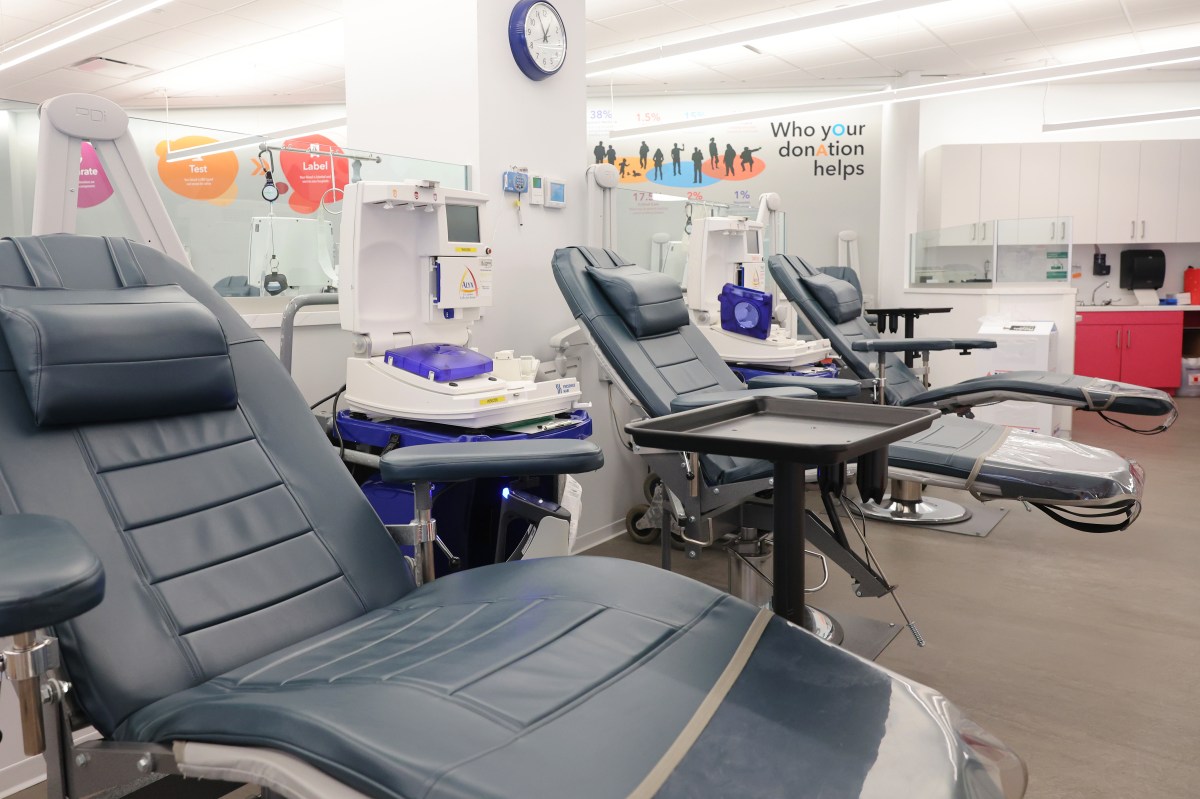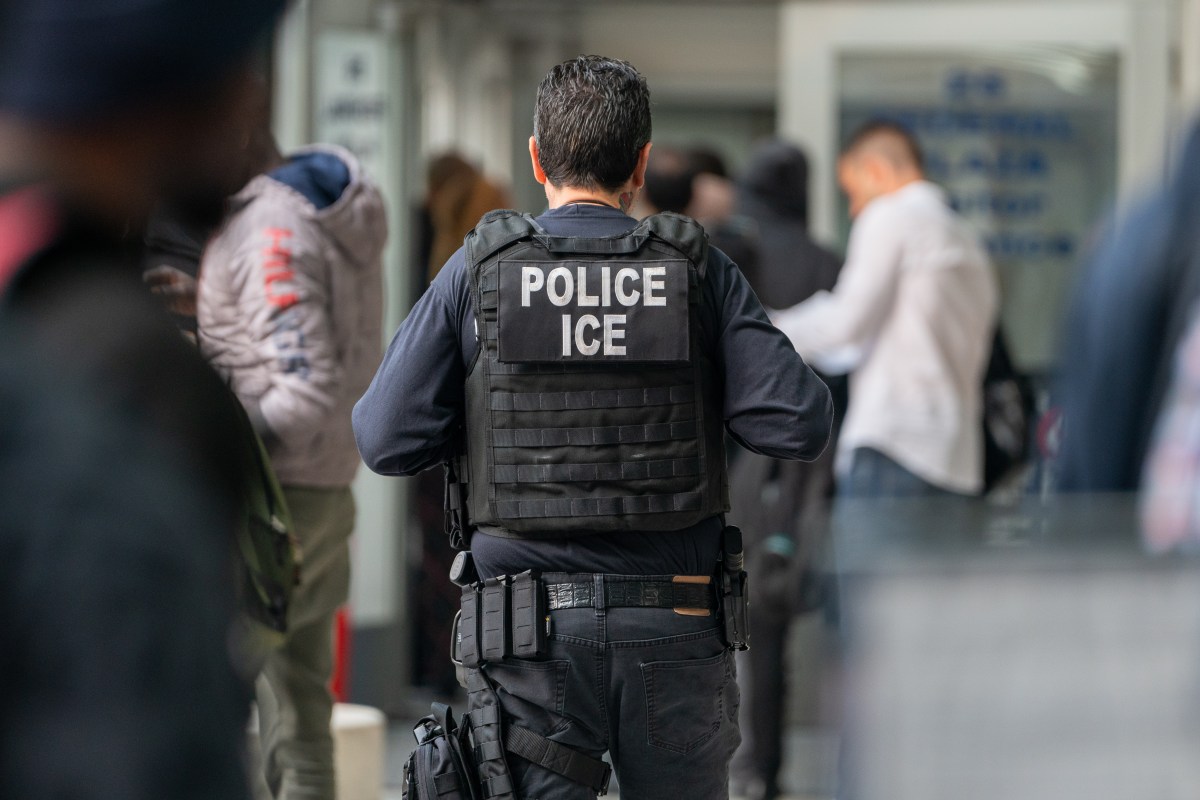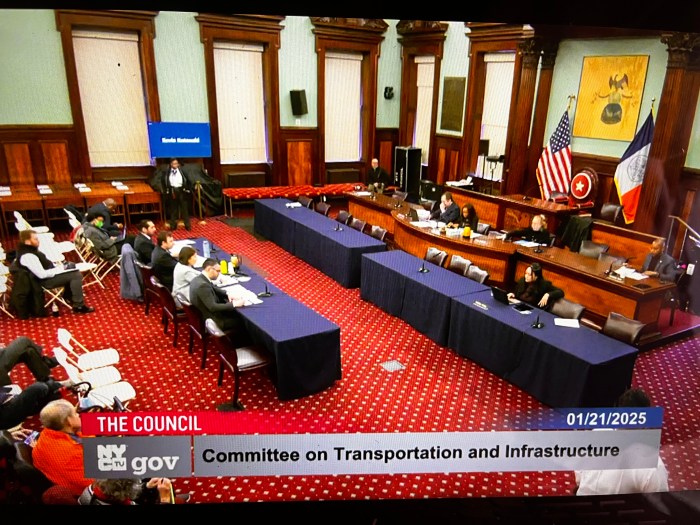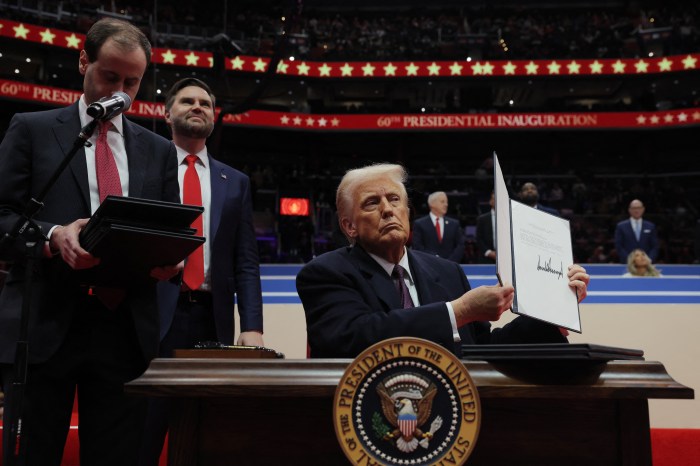
The New York Civil Liberties Union is running a pop-up “Museum of Broken Windows” near Washington Square Park this week, named after the infamous policing theory pioneered in New York City in the 1990s. The museum is free, and it looks critically at practices beyond so-called broken-windows policing in New York City and across the country.
The activist-led push for policing reform was rising before the 2016 presidential election, after the high profile deaths of multiple unarmed African-American men at police hands. Some of those protests and issues have receded from front pages. The museum calls back to those protests and what has happened since then.
Here are three noteworthy pieces of the exhibition:
Political art
The small gallery features multiple pieces of politically inflected art, such as a black banner with the words “A Man Was Lynched By Police Yesterday.”
The banner was created by artist Dread Scott (his professional name) after Walter Scott was fatally shot by a police officer in North Charleston in 2015. It references the famous flag that the NAACP flew periodically from the window of its NYC headquarters in the years before WWII. It said simply, “A Man Was Lynched Yesterday,” and it flew often.
The exhibit seems to hope that such art will have an effect on politics in the real world, outside an art gallery. Blurbs between the artworks remind visitors that artists have been critiquing police practices for decades. That includes Stonewall in 1969. In 2004, Jay Z’s “99 problems” talked about black men being targeted by police in NYC. And despite police boycotts, Bruce Springsteen sang about Amadou Diallo at Madison Square Garden in 2000. Diallo was killed by police in the vestibule of his apartment in 1999 after officers mistakenly thought he had a gun.
Images
Much of the Black Lives Matter movement was driven by videos and images — of Eric Garner on Staten Island or Scott in North Charleston that quickly spread on social media.
The exhibit showcases some of the journalistic and citizen photos that became famous as protests to police killings mounted: Lebron James wearing an “I Can’t Breathe” shirt, the famous image of a woman in a dress facing down police officers in riot gear in Louisiana in 2016.
There is a less prominent picture of Mayor Bill de Blasio giving a speech to a large crowd of dress-uniformed police officers sitting at attention, seemingly a reminder of who leads the NYPD. The NYCLU has battled with de Blasio in recent years over police transparency and NYPD surveillance technology, among other issues.
There are also jarring pictures of police officers in subway cars completely covered by graffiti decades ago — a nod to the conditions of NYC that police have long claimed showed the need for more aggressive forms of policing.
What the public wants
Two posters allow visitors to show their opinions about policing, and the results underscore some nuance.
One poster asks visitors whether they wished cops had been present the last time they felt scared in NYC. By Tuesday, more people left stickers on the side saying “I wish the cops hadn’t been there.” But almost as many voted for “I wish the cops had been there.” A museum representative said the poster hadn’t been changed since the exhibit opened.
Another poster asked whether police should be the first responders when a person with mental illness needs help, a major issue in NYC after recent fatal encounters between officers and mentally troubled individuals. The vast majority of stickers were on the “no” side.
One of the people who said they did want cops to be first responders added a qualification. “Should be with sympathy,” the note said. “No guns!”










